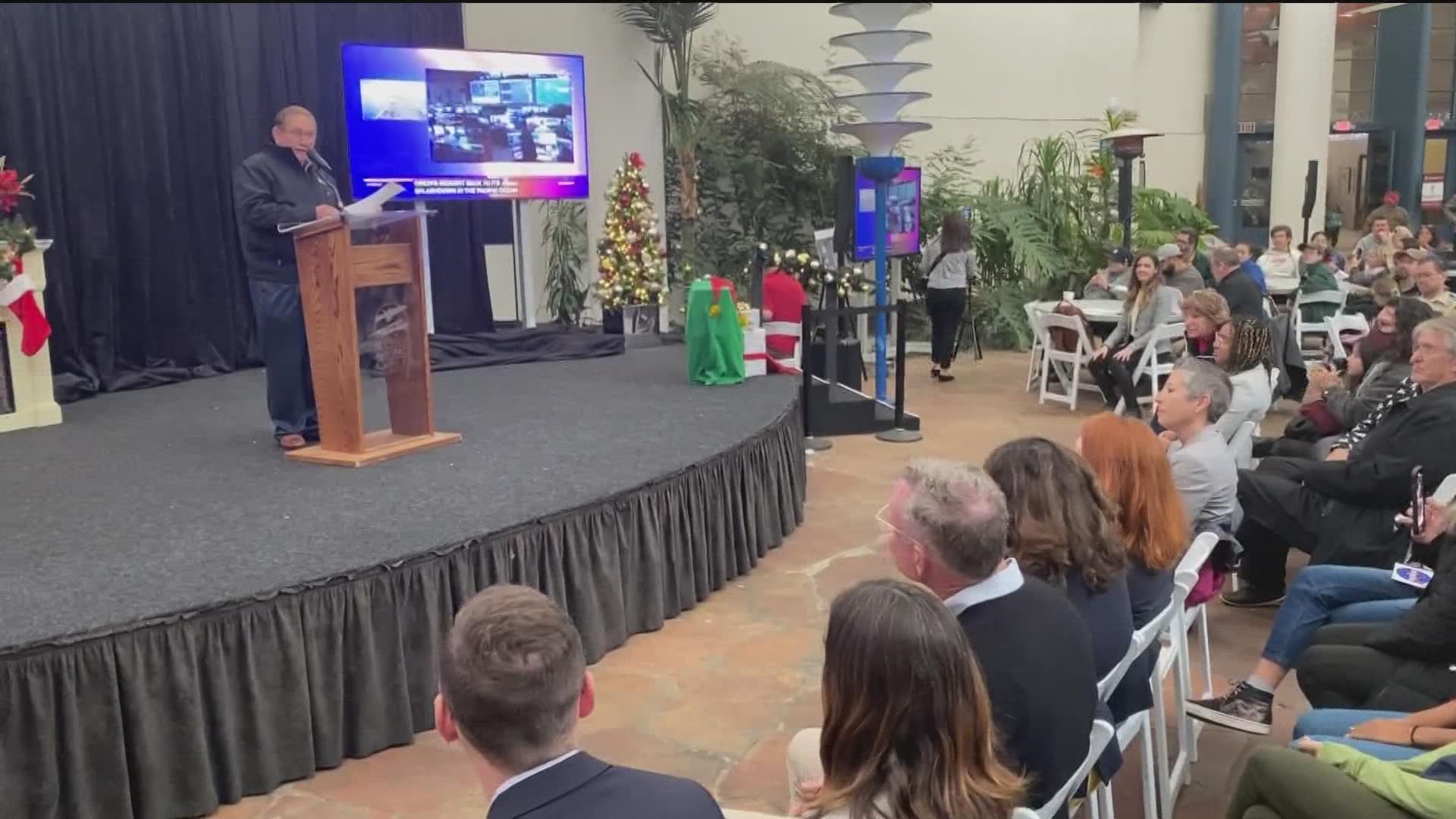SAN DIEGO — The Artemis l flight around the moon and back came to a successful end Sunday as the Orion capsule splashed down in the Pacific Ocean off the coast of Baja, California.
CBS 8’s Brian White watched the splashdown on NASA’s live feed with 500 people at a viewing party in the San Diego Air & Space Museum at Balboa Park.
“Splashdown! From Tranquility Base to Taurus Littrow to the tranquil waters of the Pacific, the latest chapter of NASA’s journey to the moon comes to a close. Orion is back on Earth,” said a NASA announcer as the crowd, made up of space enthusiasts, families, and Girl & Boy Scout troops, erupted in applause.
“An amazing time to be alive,” said Kamak Edadi, NASA’s Jet Propulsion Laboratory robotics technologist. “I had goosebumps just watching that splashdown.”
After launching from the Kennedy Space Center, the unmanned Artemis l spent 25 ½ days on a mission around the moon and back, traveling nearly 300,000 miles from Earth.
“As we returned from the moon, we were going 24,500 miles per hour with a peak heating of 5,000 degrees on the heat shield, half as hot as the sun,” said Nujoud Merancy, Chief of the Exploration Mission Planning Office at NASA’s Johnson Space Center. “When we watch something like that, I’m checking through the parachute openings, the entry. It’s seeing the stuff happen and knowing it’s all going according to plan.”
The unique part about watching the live feed with families and children was seeing the splashdown through our younger generation's eyes.
“The airplane put it down in the water, and it splashed down in the water,” said 3-year-old Violet Joy Boyd, who had fun launching her stomp rockets in the kids’ activities area.
“It’s up there because it’s stuck up there,” said Violet Joy, whose nerf rocket went so high it got stuck in the rear engine of a Vietnam-era MiG fighter jet on display in the museum. “I lost my airplane up there.”
Little girls like Violet Joy and others at the watch party will one day be working for NASA and launching real rockets into space.
“I was like, ‘Wow, that’s amazing how it only takes three parachutes to bring it down,’” said Cayla Mae Terrell, who has been a Girl Scout for seven years. “I am very interested in science. I always have been. I love learning about life and other things. I am also proud to see Jessica Watkins go on the moon soon enough one day because if she can do it, I can do it too.”
The Artemis ll is planned for May of 2024, and it will take four astronauts around the moon and back. For more information on the San Diego Air & Space Museum, visit here.
WATCH RELATED: Anticipation growing over Artemis I rocket launch to the moon

